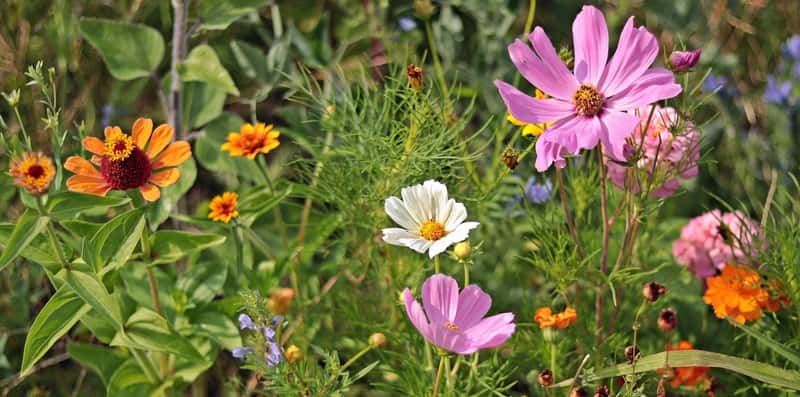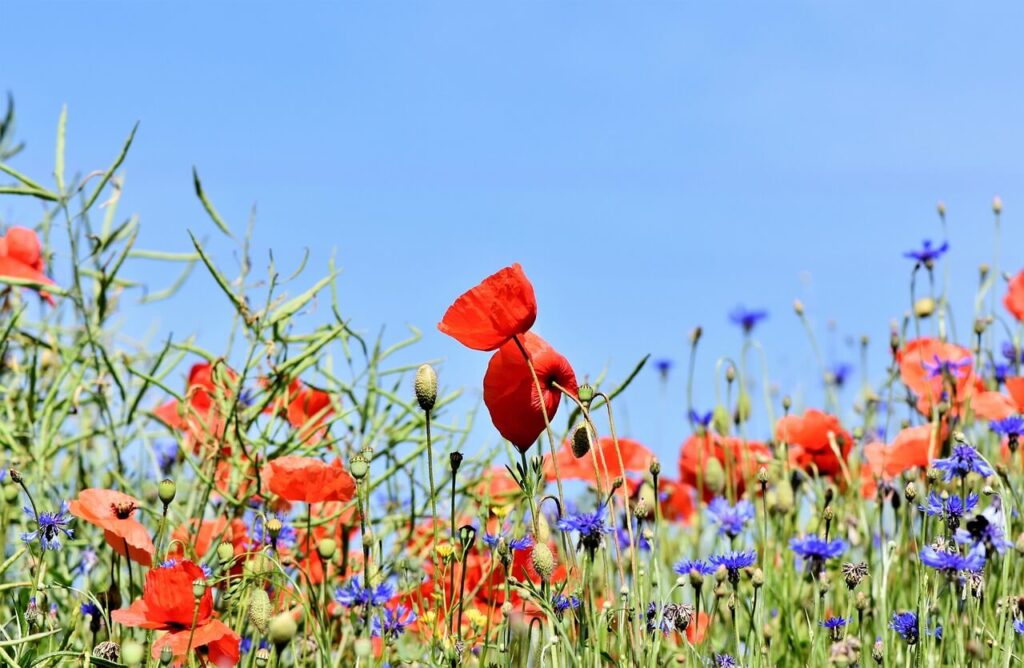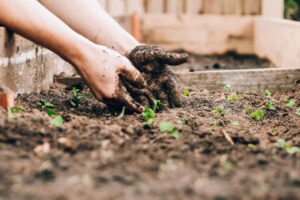Wildflowers are beautiful native and non-native flowers that can be found up and down the UK. From wildflower meadows and woodlands, to riverbanks and gardens, wildflowers create beautiful picturesque landscapes wherever they grow!
Wildflowers are easy to grow and make a beautiful addition to any garden. As well as adding colour and scent to your garden they also promote biodiversity and attract useful pollinating insects including bees and butterflies. But not all wildflowers will grow anywhere, so it’s important to follow these simple steps for growing wildflowers to ensure that your wildflower patch or bed is a blooming success.
Types of wildflowers
In order to plant wildflowers successfully, you should understand the different types available. The following are a few categories of wildflowers:
Native wildflowers
Wildflowers that naturally occur in a specific region are called native wildflowers. The plants are well adapted to local conditions and play an important role in maintaining biodiversity. Native wildflowers in the UK include Foxgloves, Poppies and Cornflowers.
Non-native wildflowers
It is possible for non-native wildflowers, also known as exotic or invasive species, to occur outdoors in your area. Despite their attractiveness, they can sometimes outcompete native plants and disrupt the ecosystem – these include Japanese Knotweed and American Skunkcabbage.
Perennial wildflowers
Perennial wildflowers like Bluebells, Buttercups and Dandelions come back year after year, making them a low-maintenance choice for your garden.
Annual wildflowers
Annual wildflowers complete their life cycle in one growing season, typically blooming in the spring or summer. Annual wildflowers include Poppies, Forget-me-nots, and Evening Primrose.
Biennial wildflowers
Biennial wildflowers, such as Teasel, Vipers Bugloss, take two years to complete their life cycle, producing foliage in the first year and flowers in the second.
When is the best time to sow wildflower seeds
Autumn is a great time for planting wildflowers – giving them time to acclimatise to their conditions before germinating. You can also sow in spring, but most seeds respond better to a dormant period before germination.

Planning your wildflower garden
Before you get started with sowing your seeds, it’s important to plan ahead to give your wildflowers the chance to grow and thrive!
Pick your wildflower seed mixes: Choose your wildflower seeds carefully. Look at the back of the seed mix packet and be guided by where you live; different parts of the UK can have very different conditions and some wildflowers may fare better in sheltered or drier spots in the south, rather than windier northern or western parts.
Pick a good spot: Choose a good spot for your wildflower bed or border. Well-draining soil and a good amount of sunlight are crucial – south-facing is ideal.
See what you’ve got already: Don’t forget that any existing soil may well have some wonderful wildflower seeds already present, as well as some options that may normally be classed as weeds such as green alkanet and nettles. Although extremely invasive, these plants are great for attracting bees and butterflies, so it may be worth seeing if you can keep and manage what’s there rather than ripping everything out.
What soil should I use for wildflower gardens
Use a sandy soil or compost such as our Wildflower Topsoil, which is a perfect mix of 90% sand to 10% peat-free compost. If you are using an existing bed, you can dig in specialist compost to give things a good start.
What wildflower seeds to sow
There are plenty of different wildflowers to choose from for your wildflower patch or bed. Think about what type of wildflower you want, maybe you want a relatively easy-to-maintain bloom, then Perennial Wildflowers will be the choice for you. Or, if you are after specific colours for your garden, choose wildflowers that will be in keeping with your garden’s colour scheme.
Preparing your wildflower bed
Here are some nice and easy tips you can use when preparing your wildflower bed.
- Dig down around 30 cm or so, and remove any roots, rocks and clods. Then wait to see if weeds or unwanted plants re-appear, before removing anything you don’t want to keep once more.
- Sow the wildflower seeds liberally, ideally in early autumn keeping them lightly on the surface. Wildflower seeds require sunlight so avoid covering them over.
- If you have problems in your garden with cheeky birds or squirrels, cover the area with net or mesh.
Once the prep is done you can sit back and wait for next season when your wild flowers should start to bloom. And don’t forget to share any of your garden pics with us on our social media channels!
How often should I water my wildflowers?
Water regularly until the plants are well established. After this, most wildflowers will survive even drought conditions. But if you want a bushier crop then it’s a good idea to keep them topped up with a regular soaking!
How long do wildflowers take to grow?
Wildflowers grow at different rates depending on factors such as their type (annual or perennial), the local environment, and the species. A wildflower’s life cycle typically lasts a few weeks to several months during a growing season. The first blooms of perennial wildflowers often appear in the second year. Germination time can vary, from a few weeks to several months, and growth and bloom rates depend on factors like sunlight, water, and temperature.
Benefits of wildflowers
Wildflowers have many fantastic benefits for both your garden and nature. Here are just a few examples of why we should all embrace wildflowers:
- They provide food: Bees, butterflies and other pollinating insects love wildflowers and can get all the food they need for the whole year. Comfrey and Borage are great pollinators and make a lovely addition to any wildflower patch or bed.
- Help with flooding: Large wildflower meadows can help with flooding thanks to their root systems holding onto water.
- Mental health: We all know spending time outdoors does wonders for our mental health. So, if you have wildflowers in your garden or know of a good wildflower spot, take a bit of time out to breathe in the fresh air and enjoy the wonderful colours.
- Other benefits: There are other benefits to some wildflowers which you might want to embrace. For example, nettles also make a great tea. Nettles can also be immersed in water and left to brew for six weeks to make a wonderful liquid fertilizer.
Everything you need for your wildflowers at Earth Cycle
If you are planning on planting wildflower seeds, Earth Cycle has everything you need to grow a successful and stunning wildflower garden. Our range of topsoils, composts, and mulches can be used to help your patch thrive. If you need some handy tools for digging, take a look at our tools page as well.
All our products can be delivered curbside, so order now and we will deliver your products to your door so you can get growing!




